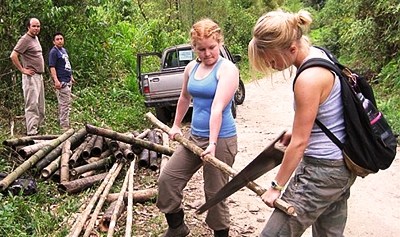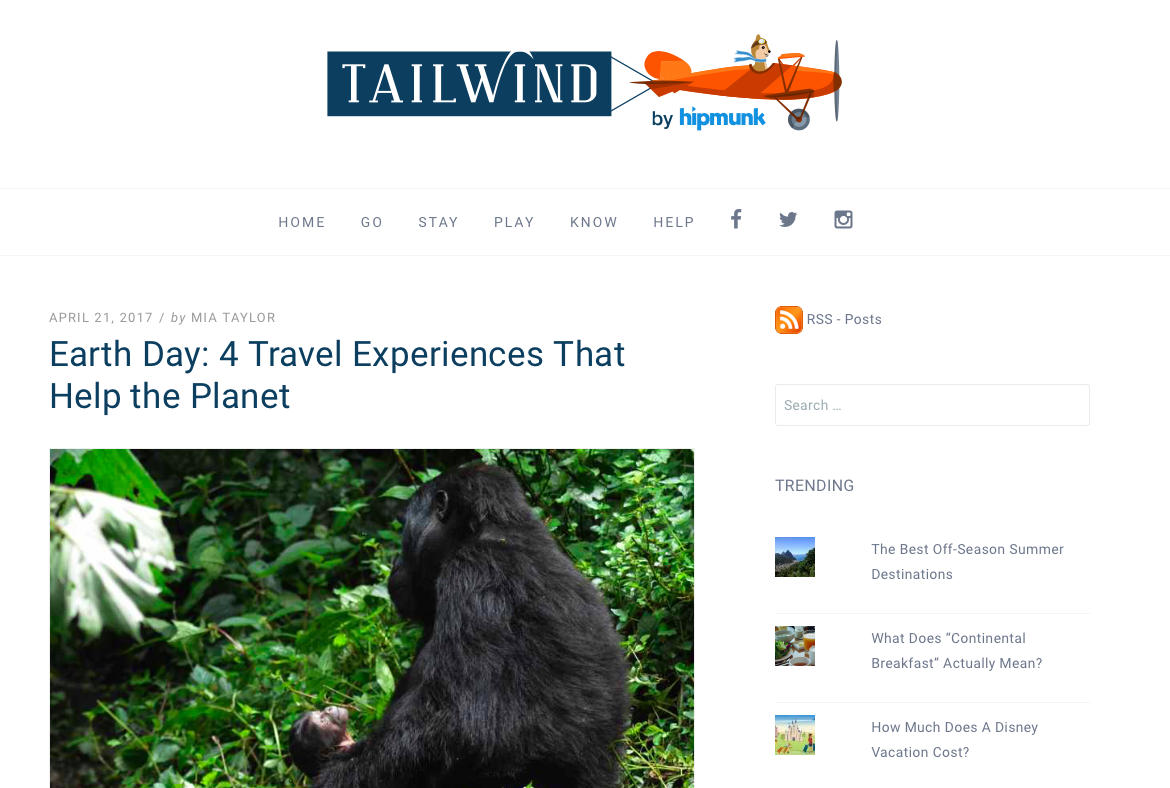
About the project
By Mia Taylor
Hipmunk
Three billion acts of green.
Acts small and large: Planting a tree. Voting for candidates who believe in climate change. Giving up the use of plastic bags. Recycling. Reducing your consumption of meat in order to decrease our reliance on an industry that generates about 20 percent of the world’s greenhouse gas emissions.
These are some of the steps that, while they may seem small, will collectively help protect the planet we call home. And they will also help the Earth Day Network reach the lofty goal it has set for the year 2020.
By that point in time, the network, which was born out of the first Earth Day in 1970, would like people to have engaged in three billion acts of green.
Already 2,023,369,535 such acts have been recorded by the organization, so the goal is not unrealistic. But it may perhaps be more pressing than ever.
According to NASA, nine of the 10 warmest years on record have occurred since 2000. And in 2012, Artic summer sea ice shrank to the lowest extent on record.
All of which is important because we’re approaching Earth Day 2017. This global event, which started in the United States but now includes one billion participants in nearly 200 countries, will be observed April 22.
Originally created as a national day to focus on the environment, (inspired by such problems as air and water pollution, oil spills and disappearing wildlife and habitat), Earth Day is nearing its 50th anniversary. And the fight for a clean environment continues with a renewed urgency, as the impacts climate change become more apparent with each passing day.
And for the avid travelers among us, it should go without saying that even your travel choices and activities can have an impact on the planet.
So the question is, as Earth Day 2017 approaches, what will your act of green be?
To help with the answer, here are four experiences you can participate in while traveling that give back to the planet in some way.
SEE Turtle Rescue
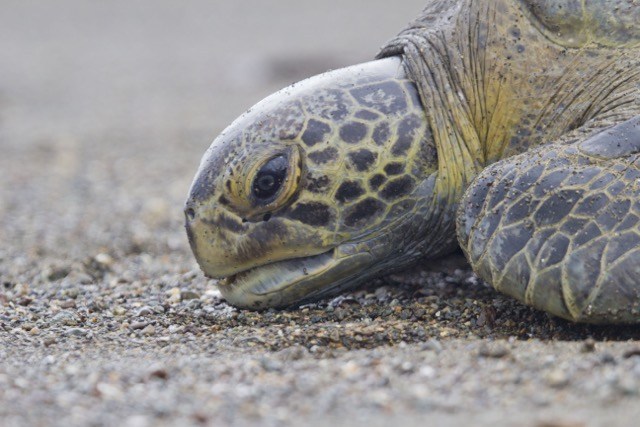
SEE Turtles Credit: Hal Brindley.
Six out of seven sea turtle species around the world are threatened or endangered, says Brad Nahill, director and co-founder of SEE Turtles, a non-profit that supports conservation efforts throughout Latin America.
“There’s a variety of reasons for them being threatened and endangered,” begins Nahill. “Turtles getting caught in fishing gear, turtles being consumed in a lot of places. Their eggs are also consumed in a lot of developing countries because they’re thought to be an aphrodisiac, even though there’s no scientific evidence that that is the case. Their shells are turned into jewelry in some places. Plastic in the ocean is a threat and global warming is a threat.”
SEE Turtles works to protect the endangered animals through education programs and also sea turtle conservation and volunteer tours. Managed by the Oceanic Society, the tours directly support efforts to save the turtles. Participants volunteer alongside local researchers, supporting a variety of activities throughout Latin America, including in Mexico, Costa Rica, and Cuba.
“In a lot of places where people are illegally collecting eggs, researchers will move them to a hatchery – an area of sand that’s fenced off and watched 24 hours a day. And once they’ve hatched, they will release the turtles into the ocean,” explains Nahill. “Walking the beach with researchers, volunteers are able to help extend the reach of the researchers. In many of these places, there’s only a couple of paid staff members.”
Under the supervision of researchers, volunteers also help measure sea turtles, collect and move eggs and release baby turtles to the ocean. The trips typically involve about four nights of volunteering.
Since SEE Turtles began its efforts 10 years ago, it has helped save more than 800,000 hatchlings across Latin America.
“There’s not a lot the average tourist can do to about global warming or about the turtles getting caught in fishing gear,” says Nahill. “We started this project so that people can participate in an experience that directly reduces poaching.”
Sustainable Harvest International
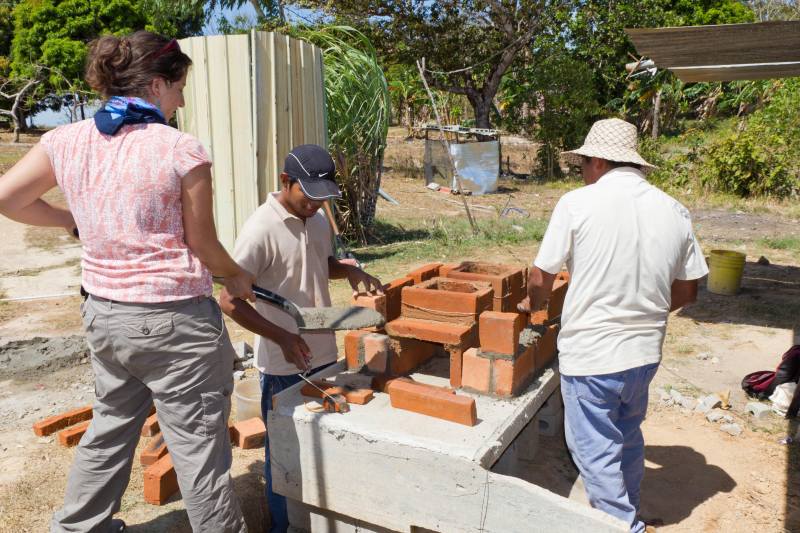
More than half of the world’s tropical forests are already gone and we’re losing the other half at the rate of one acre every second, according to a Global Forests Resources Assessment Report.
Working with families throughout Central America to help them transition from slash-and-burn agriculture to sustainable, organic methods that benefit the planet and the families themselves, Sustainable Harvest International was created with the mission of saving tropical rain forests.
And as a byproduct of that goal, the organization is also helping to improve the health and the lives of local families and saving the habitat of countless animals.
The volunteer component offered by the organization, designed for travelers, is a way to showcase the work being done by Sustainable Harvest and its local partner families.
During the trips, volunteers work alongside small scale farmers, supporting their efforts and also helping to build solar latrines, plant trees, or construct wood-conserving stoves.
“Even though the volunteering might only be for an afternoon or for a day, and the amount of work completed might not seem like a lot, there’s a lot of value for the local families to know that people care enough to help them and to share a meal with them and sit with them, that’s where a lot of the value comes in,” says Sustainable Harvest Executive Director Renee Johnson. “It motivates our partner families to keep up the work. It’s a small point in time but sometimes you need those small wins to keep going. It helps the families understand they’re having a global reach.”
Since 1997, Sustainable Harvest has worked with more than 2,800 families and planted 3.9 million trees. In addition to offering an organized volunteer trip each year, Sustainable Harvest arranges custom trips for families and trips designed for church groups.
“Opportunities like ours really offer people a chance to do something hands-on to make a difference, more than just donating money,” says Johnson.
Gorillas in Uganda
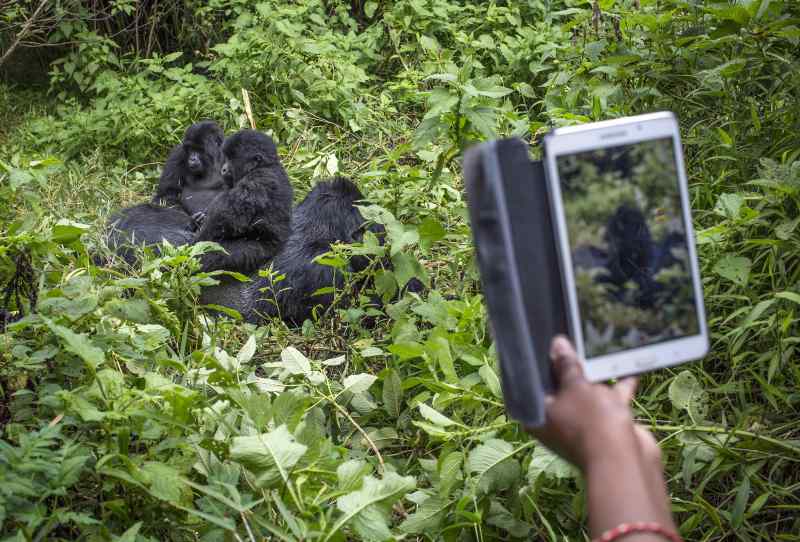
Uganda Gorillas Credit: Jiro Ose.
The Bwindi Impenetrable National Park, in southwestern Uganda, is home to more than 400 mountain gorillas, which is roughly half of the world’s remaining population. Preservation of the fragile habitats that the gorillas call home is essential to their survival.
In an attempt to increase conservation of the endangered mountain gorillas and their habitat, the Uganda Wildlife Authority last year launched the Gorilla Habituation Experience for visitors.
The day-long experience allows travelers to join researchers, trackers, rangers, and conservationists tracking and spending time with a gorilla family.
Permits for the gorilla habituation experience are $1,500 per person and the money is used to pay for veterinary programs to keep the gorillas healthy; educational and economic development programs for local communities designed to help minimize human-wildlife conflict and habitat encroachment; and anti-poaching initiatives.
“Experiential tourism has proven to be one of the most effective means of supporting conversation of the gorillas and their habitat, as the money it generates goes directly toward funding important conservation activities,” said Gessa Simplicious, public relations officer for the Uganda Wildlife Authority. “The permits that visitors purchase to take part in this experience helps pay for day-to-day administration of the national parks, staff salaries, uniforms for rangers, vehicles, and more.”
United Planet
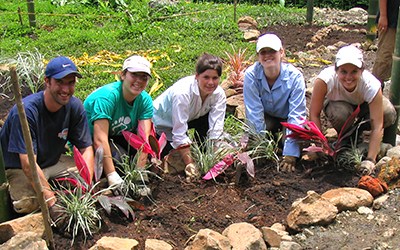
Volunteer travel programs through United Planet allow participants to address a range of issues across the globe, from poverty, to global health, to climate change and involuntary migrations.
The non-profit organization offers both short (one to 12 weeks) and long-term (six months or longer) volunteer opportunities around the world. Examples include assisting with preservation of conservation land, flora, fauna, and water resources in Costa Rica; working on reforestation projects in Ecuador; and working at an animal sanctuary in Peru.
“We focus on three areas – the environment, education, and health, in no particular order. These are the critical areas” says United Planet Founder and President David Santulli. “Of the key global issues happening now, many of them fall into these three areas. And it’s important that the world comes together around these issues now.”
United Planet partners with local organizations in the countries where it offers volunteer programs. In addition, many of the experiences involve home stays, allowing participants to truly make a connection with locals and learn about the culture, in addition to volunteering.
“When our volunteers go to a place, they’re not only addressing an issue, they’re working with locals, so it’s like a double bottom line. They’re supporting the cause and learning to work across cultures with others and sharing their own culture, which benefits others,” says Santulli. “What’s important in 2017 is that we come together. These issues around the environment are something we all share. We need to work as a global community. I think there’s a huge opportunity to build a more united planet by rallying together in new ways to rise up to face up these global challenges together.”
